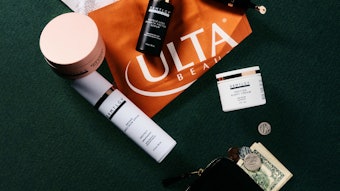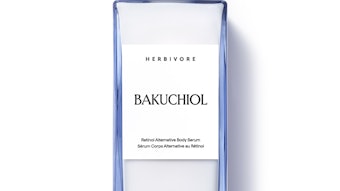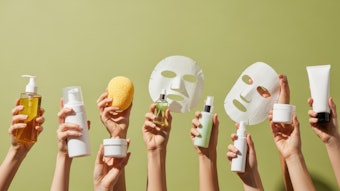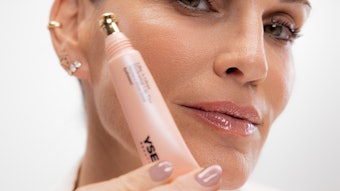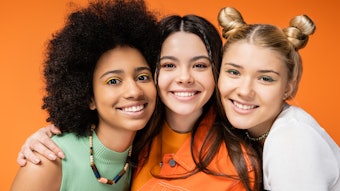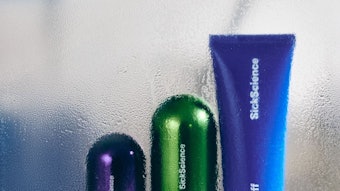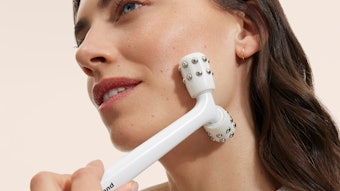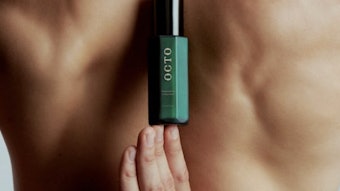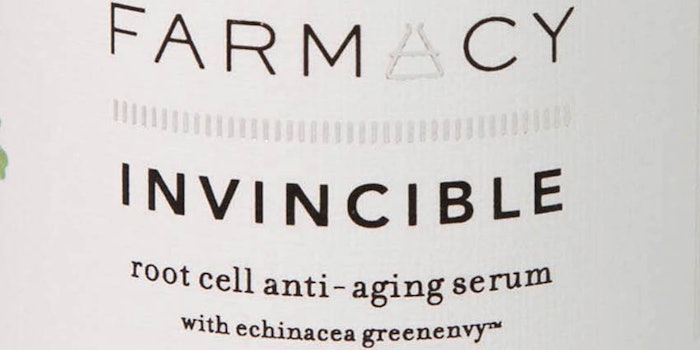
It began in upstate New York with a bright green bloom emanating from a variant of Echinacea purpurea, which its “discoverer,” Mark Veeder, patented as “Echinacea purpurea ‘GreenEnvy.’”
Under lab analysis, Veeder confirmed that Echinacea GreenEnvy’s intense color derived from an exceedingly high chicoric acid content, making it a valuable skin care ingredient to prevent the oxidation of collagen and cells. And so a brand, Farmacy, was born.
How to Launch in Less than 12 Months
Veeder’s unique botanical became the foundation of Farmacy, a “farm to face” beauty brand that leverages farm-grown botanicals to create irritant-free skin care products.
The brand came together on a short timeframe—Farmacy was conceived in 2014, launched in August 2015 and went on-air at QVC in September 2015. To make such a short timeline work, Veeder needed help.
To help “supercharge” the Echinacea, Farmacy formulations include layers of boosting ingredients such as the Triple Hyaluronic Acid Technology
Armed with a passion for gardening and a strong PR, branding and experiential events background in the luxury and home furnishings sector, Veeder brought Farmacy to life by partnering with David C. Chung, founder and CEO of Englewood Lab, and Caroline Fabrigas, a former Clarins executive and consultant with expertise in building naturally and scientifically derived brands.
Fabrigas delivered marketing, contacts and the experience to pitch the brand to QVC and Sephora. Chung brought his technical prowess and extensive R&D expertise, gained from working with more than 85 brands via his lab. Veeder designed all the packaging and “rich, authentic storytelling materials.”
Science is the Differentiator
Fabrigas explained to Global Cosmetic Industry (GCI) magazine that she has noted a significant drive toward radical transparency, authenticity and truly natural beauty products. However, she has also witnessed consumer disappointment in the efficacy of natural beauty. And so, working with the Farmacy team, she sought to create the best marriage of naturally derived ingredients brought to life thorough science.
Veeder concurred, noting that he wanted Farmacy to offer proven efficacy beyond botanical folklore. “Science was the differentiator,” he explained, driven by clinical trials and evaluations.
Developing the Feel of the Brand
Veeder built on the back-to-local movements in food and lifestyle, focusing on shrinking the overall footprint of products and brands. People want to be healthier and know where their products are coming from, he told GCI.
Looking ahead, Farmacy will launch liquid skin care, including a makeup-setting/hydrating spray that is “like a fresh-squeezed juice.”
Fabrigas wanted the brand to “feel good,” she explained, and to have an experiential component. As a result, Farmacy’s products focus on stability and sensorial elements, with some changing color or texture in-use.
Veeder also highlighted the brand’s luxe experience and approachable price points. For example, the Invincible Root Cell Anti-Aging Serum with Echinacea GreenEnvy retails for $65, while the Rise ‘n Shine Daily Moisture Lock with Echinacea GreenEnvy retails for $40.
Retail Co-development
Fabrigas noted that some of the brands’ products were co-developed with its retail partners. For instance, Sephora sought a more sophisticated type of lip gloss, so Farmacy developed a range that paired herbal notes with fruits, for instance Strawberry Basil, Citrus Lemongrass and Apple Rosemary. Veeder explained that Sephora wanted a “yummy” lip treatment that could be worn over or under lipstick, almost as a primer, but with a more botanical than traditional fruity feel.
The brand launched with an endcap featuring glass chicken wire, dark metal and wood—and, of course, the green Echinacea flower—at 150 Sephora doors and Sephora.com. At QVC, where Veeder is the face of the brand, Farmacy has done well on television and QVC.com.
Natural Can Be Innovative
Focusing on natural ingredients in no way inhibits innovation, Fabrigas stressed. For instance, Farmacy has extended the Echinacea GreenEnvy concept into new types of products, such seasonal products and a line of sheet masks, including Hydrating Coconut Gel Mask - Soothing (Kale), Hydrating Coconut Gel Mask - Brightening (Purple Broccoli), Hydrating Coconut Gel Mask - Firming (Celery), Hydrating Coconut Gel Mask - Anti-Wrinkle (Rhubarb) and Hydrating Coconut Gel Mask - Deep Moisture (Cucumber), all of which retail for $24 at Sephora.com.
The Korean beauty trends influenced these latest launches, said Fabrigas. Looking ahead, Farmacy will launch liquid skin care, including a makeup-setting/hydrating spray that is “like a fresh-squeezed juice.”
Ingredient Education
Having a great powerhouse ingredient is one thing. Educating the consumer about its benefits in an approachable way is another. Fabrigas explained that Echinacea GreenEnvy’s high chicoric acid content brightens and defends the skin. And Vedeer noted that consumers already have a high awareness of Echinacea due to its health effects in immunity boosting and anti-inflammatory, antioxidant and anti-viral activity.
To help “supercharge” the Echinacea, Farmacy formulations include layers of boosting ingredients such as the Triple Hyaluronic Acid Technology, “which is produced via biotechnology, boosts the skin’s natural moisture, utilizing three specific molecule weights to target skin at different levels,” according to the brand.
To communicate Echinacea GreenEnvy’s benefits in a “friendly” way, Fabrigas noted that the brand has included an ingredient story printed on the interior of the products’ cartons, along with a “Meet the Farmers” introduction that describes the brand’s cooperation with an upstate New York farmer who is exclusively growing all the Echinacea GreenEnvy for the line. This communication is just the start of Farmacy’s efforts to celebrate and positively impact farming and farmers around the world.
By printing the brand story on the interior of the secondary packaging, Farmacy can avoid printing brochures. The design employs sustainable paper and soy ink. The primary packages, meanwhile, feature ashwood caps and glass jars that consumers can repurpose. The medium is literally the message.


